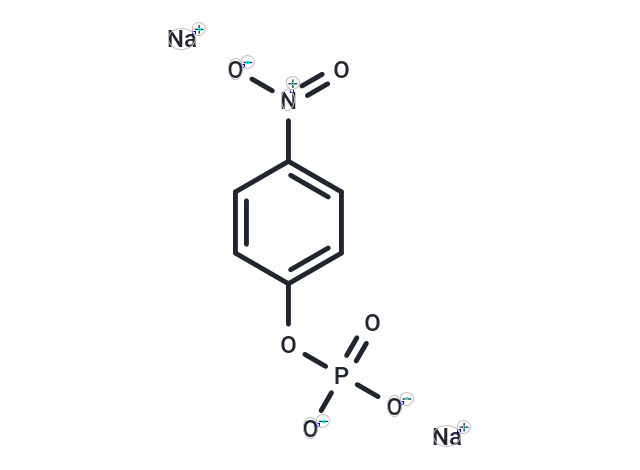Shopping Cart
Remove All Your shopping cart is currently empty
Your shopping cart is currently empty
PNPP is a non-proteinaceous chromogenic substrate for alkaline and acid phosphatases used in ELISA and conventional spectrophotometric assays.

| Pack Size | Price | USA Warehouse | Global Warehouse | Quantity |
|---|---|---|---|---|
| 1 g | $35 | In Stock | In Stock | |
| 5 g | $78 | - | In Stock |
| Description | PNPP is a non-proteinaceous chromogenic substrate for alkaline and acid phosphatases used in ELISA and conventional spectrophotometric assays. |
| In vitro | Instructions I. Solution preparation 1. Stock solution preparation: Dissolve PNPP powder in an appropriate buffer, usually at a concentration of 5–10 mM. It is recommended to use a buffer containing 50 mM Tris-HCl and 10 mM MgCl₂, with the pH adjusted to 9.5 to suit the activity of alkaline phosphatase. 2. Working solution preparation: Dilute the stock solution to the required concentration, usually 2–5 mM, according to experimental needs. II. Operation steps 1. Reaction conditions: Temperature: 37°C. Time: 10–30 minutes, the specific time needs to be optimized according to the experiment. 2. Detection method: 1) Under the action of the enzyme, PNPP is hydrolyzed to produce yellow p-nitrophenol, which has a maximum absorption peak at 405 nm. 2) Use a spectrophotometer to measure the absorbance at 405 nm to evaluate the activity of the enzyme. Note: Fresh preparation: PNPP solution should be prepared before use and avoid long-term storage to prevent hydrolysis. Store away from light: PNPP is light-sensitive, so strong light exposure should be avoided during operation. Termination of reaction: In ELISA experiments, an equal volume of 0.1 M NaOH or 0.1 M EDTA can be added after the reaction is completed to terminate the reaction. |
| Molecular Weight | 263.05 |
| Formula | C6H4NNa2O6P |
| Cas No. | 4264-83-9 |
| Smiles | [Na+].[Na+].[O-][N+](=O)c1ccc(OP([O-])([O-])=O)cc1 |
| Relative Density. | 1.712g/cm3 |
| Storage | store at low temperature,keep away from direct sunlight | Powder: -20°C for 3 years | In solvent: -80°C for 1 year | Shipping with blue ice/Shipping at ambient temperature. | |||||||||||||||||||||||||||||||||||
| Solubility Information | H2O: 255 mg/mL (969.4 mM), Sonication is recommended. | |||||||||||||||||||||||||||||||||||
Solution Preparation Table | ||||||||||||||||||||||||||||||||||||
H2O
| ||||||||||||||||||||||||||||||||||||
| Size | Quantity | Unit Price | Amount | Operation |
|---|

Copyright © 2015-2025 TargetMol Chemicals Inc. All Rights Reserved.